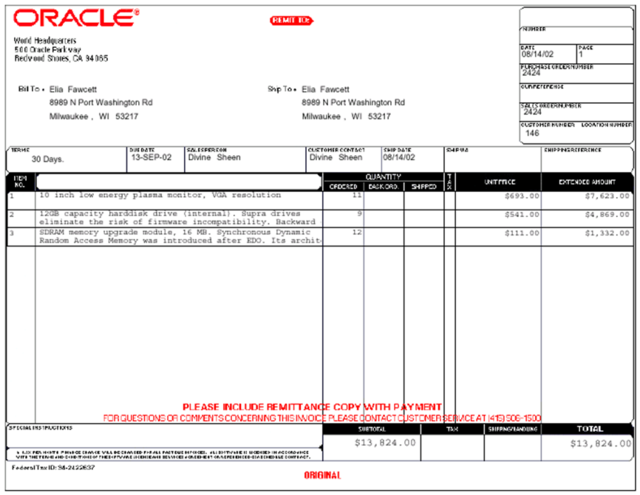Optional. Read to learn more about the commercial invoice.
Invoice document
Invoices are traditionally commercial documents used by buyers and sellers of goods and services. They are a central document in trade transactions from the clearance point of view, as they must be presented to Customs and are used for various calculations and checks. The invoice document has developed through custom and practice but it usually has several legal requirements imposed on it. The most significant of these are tax requirements especially in relation to Value Added Tax (VAT) and other similar charges and duties. Invoices must be accurate and authentic as they are printed and possibly stamped according to some jurisdictions, carried as legally valid original paper documents, often endorsed by a state consulate, and stored for a number of years according to local and international laws.
An invoice consists of an itemized account of goods shipped, services performed or work done, an amount expended or owed, and a demand for payment. It may contain a range of other administrative or logistical information and usually states applicable taxes payable. It is a crucial link or pivot between physical and financial supply chains and accordingly has been described as the “queen” of commercial documents. It is important to note that in traditional invoicing all these features are derived from a single paper document, often with the word “Invoice” on it. The picture below illustrates a generic invoice template.

